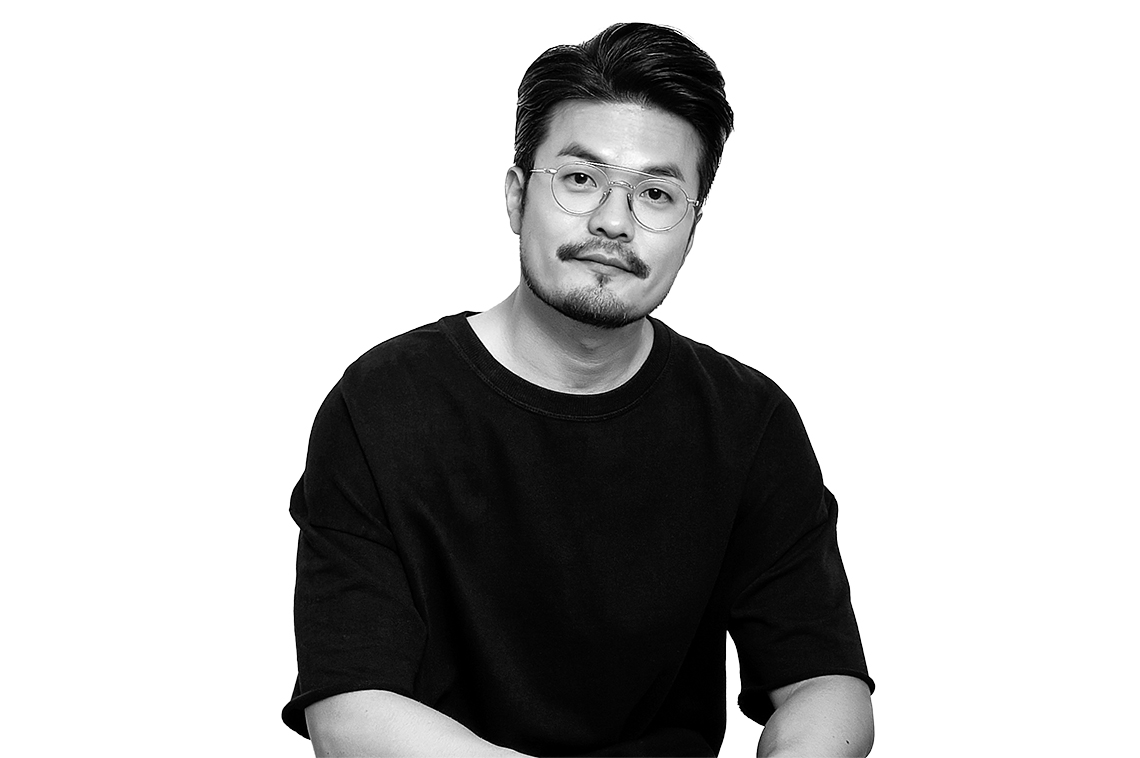Pottery has existed for over 5,000 years, dating back to before the birth of Christ. There have been plenty of changes in the meantime. Given all its changes, pottery can be―and given enough time, probably will be―anything. Even so, we don’t know all of pottery’s possibilities. When it comes to pottery, we tend to imagine a crock gathering dust in a museum somewhere. Yoo Eui Jeong is here to shatter those stereotypes. Pottery can be sculpture, and pottery can be combined with other materials. In short, it can be anything we imagine. Viewing Yoo’s work arouses curiosity about what form pottery will take next.
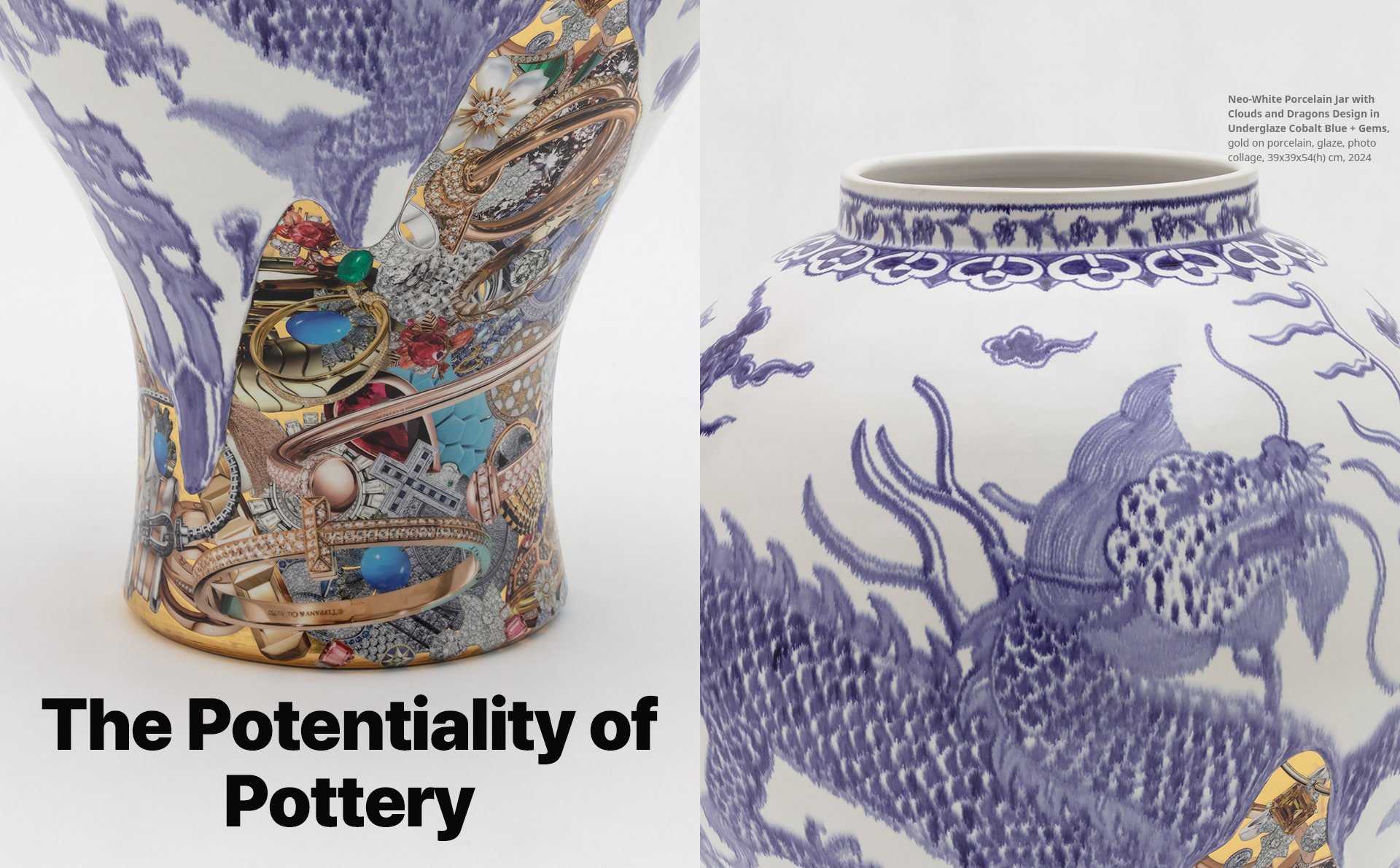
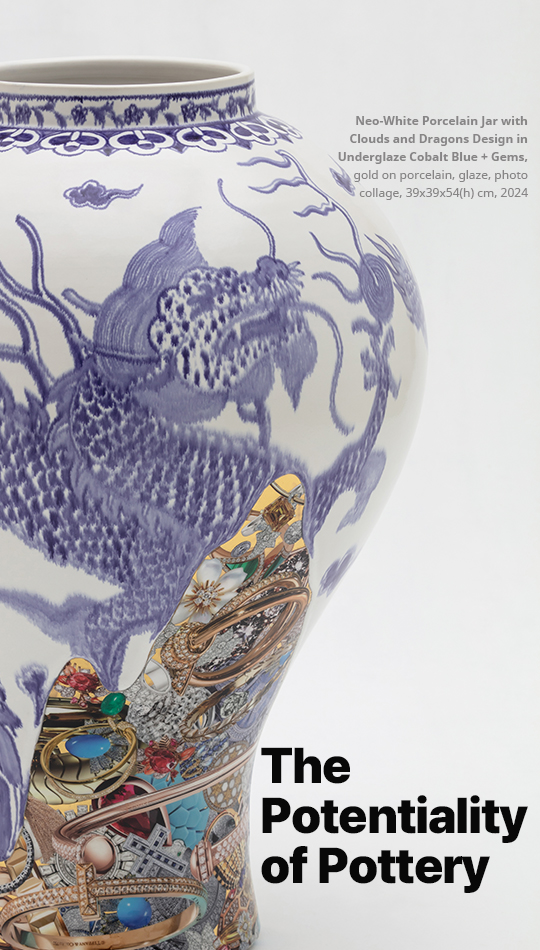
Writer.
Sung Ji Yeon
Photos courtesy of.
Yoo Eui Jeong
Yoo Eui Jeong
Q. What led you to get into ceramics?
My family members were doing art, which naturally inspired me to do art, too. My father recommended ceramics to me. The fact that you can work with both surfaces and solids appealed to me, so I enrolled in the ceramics department. There were many things I had to learn about artistic expression, but I chose this path because I liked ceramics.
Q. What did you like about ceramics?
I’m curious about a lot of things, and I don’t like getting bogged down in any single thing. In that sense, ceramics has brought me freedom. Since a piece of pottery can be anything, it has enabled me to express anything I like. The fact is that ceramics is divided into several areas, and ceramic artists typically stick to a specific area and style. But that didn’t seem necessary to me. So, I’ve sought to learn as many techniques as possible to express myself through my desired materials and style.
Q. As you said, your pieces reflect quite a range of styles. Perhaps most striking is ceramic pieces that don’t look much like traditional ceramics. What were you hoping to express through that style?
When pottery comes up in conversation, people generally think about pottery in historical terms. But pottery has always been in flux. It’s always been absorbing new forms of expression, such as photography and painting. Pottery can take on various forms, but people aren’t aware of that. So I’ve made ceramic pieces that diverge from traditional forms, with colors and textures resembling plastic and metal and pieces containing a photographic collage of my face. I’ve been trying to demonstrate that pottery can become anything and has many different faces.
Q. Some of your pieces are historical artifacts engraved with corporate logos or famous characters. What’s the message behind those pieces?
Pottery reflects its era. The form of pottery has changed according to social demands. Pieces of pottery were engraved with important symbols. So, how should today’s pottery reflect our current era? That was the question that led me to form my style. I combined ceramic forms from several countries to show how various cultures mix in the current era. And since corporate logos seem to be the powerful “symbols” of our current era that are known to everyone, I engraved the logos of a hundred global corporations in my work.
Q. Some of your pieces are plain Korean style. What is the reason for that approach?
Korean pottery isn’t as well-known as that of our neighbors. Because of a closed-door policy and other political factors, Korea developed a unique style that was uninfluenced by outside forces. Another factor is scarcity. There are few extant artifacts, which makes them highly valued in the global market. Since people are so passionate about that distinctly Korean style, I’ve always wanted to try my hand at Korean ceramic forms. Another reason I tackled that project was to convey a profound message through restrained language. I don’t think the diversity of decorative elements correlates with the message’s gravity.
Q. Your pieces often take the form of large crocks called hangari in Korea, despite varying styles and messages. Why is that?
An artist’s handiwork is called “craft” when it’s practical and “fine art” when it’s not. The same is true of pottery. But that’s a distinction that began in modern times and didn’t exist in the past. I disagreed with the current assumption that crock-shaped objects aren’t pieces of art. So, when I addressed the question of what pottery should be in my artwork, I deliberately chose the crock, being a familiar form of pottery. I wanted my work to pose the following question to viewers: If I made a sculpture out of pottery, how would you interpret that? I wanted to show that pottery straddles the boundary between craft and fine art.
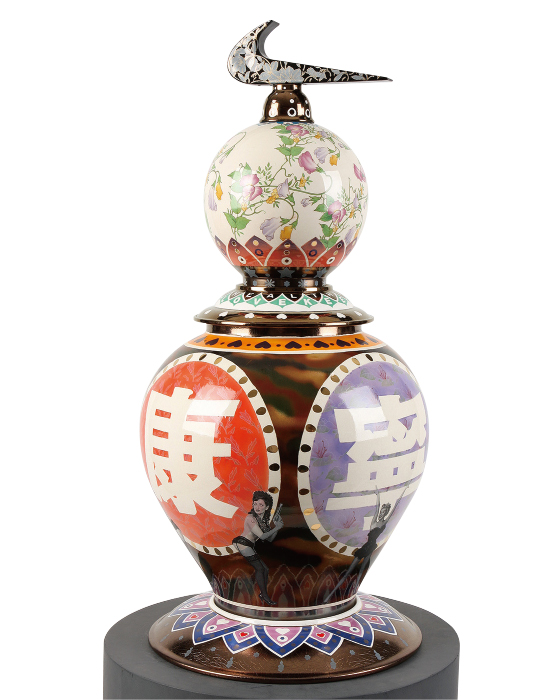 Prayer I,
Prayer I, ceramic, decal, gold, motor,
40x40x88(h)cm, 2010
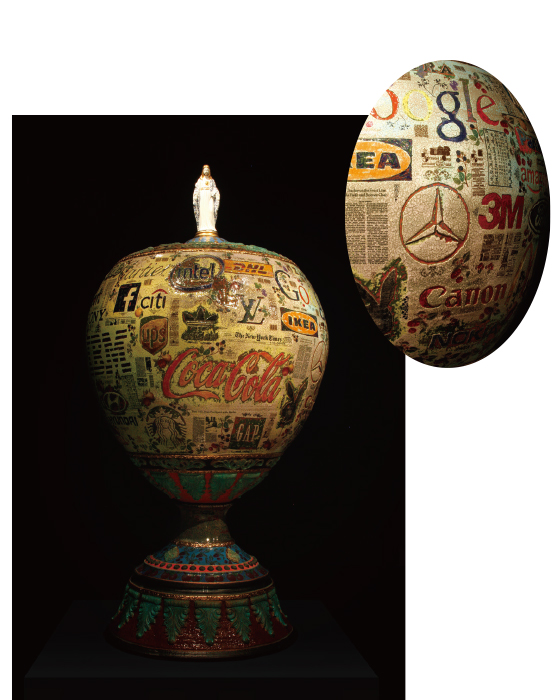 The record of 2014, ceramic, glaze, gold,
The record of 2014, ceramic, glaze, gold, white gold, bronze, iron, decal,
83x83x167 cm, 2014
 Hasta la victoria siempre!!,
Hasta la victoria siempre!!, ceramic, glaze, decal, white gold,
motor 45x45x112 cm, 2009
Q. You’ve worked in a range of other media, such as photography and video. What’s your reason for that?
One reason is because I wanted to express subjects in other media, and another is because I was experimenting with adding new elements to my pottery. That’s especially true of video. Pottery doesn’t move, but there were dynamic elements I wanted to express. I wanted to attach neon signs and motors to my work and capture the moment glaze slides down an object. I thought those ideas would work well as videos. Going forward, I want to record the changes that pottery itself undergoes.
Q. Where does all that inspiration come from?
I hope to carry on my work as an artist for a long time. To maintain a steady output stream, you need a corresponding amount of input. I looked for inspiration and gleaned ideas and information from nearly every media. It’s not just written works―nowadays, I watch movies and videos and view exhibitions spanning a range of artistic genres. I even go to department stores and ponder why people want to buy products. That seems to help me keep getting ideas and sustain the energy to experiment with new things.
Q. What do you consider most important in your work?
Without a doubt, it’s having fun. I referred earlier to the boundless potential of pottery. Well, that’s something I’ve made happen by bringing together a range of personal discoveries. For example, the fact that pottery can be combined with images and sculpture has been a very interesting topic for me since I discovered it.
The second thing is never giving up and refusing to accept failure. Artists need to be able to produce the image they have in mind, of course. But we also need to remember that we can’t arrive at that image all at once. So, we must keep reviewing the data we get from our work. Even when you fail, analyzing the causes of that failure gives you data. As that data accumulates, it becomes an artistic advantage. You need the courage to break the rules and try new things.
Q. What does ceramics mean to you?
It’s my own artistic language. That’s how it feels to me now. So pottery makes me happy and keeps me interested, and I want to keep studying it. I want my pottery to make a mark in art history someday. Just as I learned about the history of ceramics and humanities through somebody else’s artwork, I’d like to make something for the history books before I go.
Q. How do you want viewers to see your artwork?
I’d like people to recognize its newness. I’m not talking about complete novelty but helping people focus anew on things we take for granted because they’re right in front of us. Beyond that, I’d like my artwork to get people more interested in ceramics. When people learn about the stories behind pieces of pottery, they take a greater interest in ceramics as a whole. I hope that will help people view pottery as fine art.
Q. What plans do you have for the future?
In November, I’ll hold a solo exhibition at Gallery Jiwooheon in Bukchon, Seoul, and a solo exhibition at Gallery CNK in Daegu. Then, in late November, I plan to participate in a special exhibition on contemporary Korean ceramics at the National Museum of Modern and Contemporary Art, Gwacheon. In October, I’ll be attend Fine Art Asia in Hong Kong and hold an exhibit at the Korean Cultural Center in Hong Kong in November.
